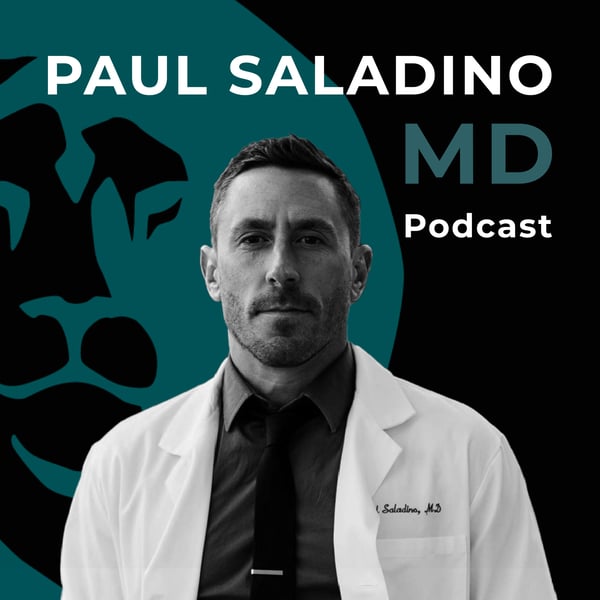134. Can meat be part of a "sustainable" diet?
Paul Saladino MD podcast
Paul Saladino, MD
4.8 • 2.7K Ratings
🗓️ 5 November 2021
⏱️ 25 minutes
🧾️ Download transcript
Summary
Transcript
Click on a timestamp to play from that location
| 0:00.0 | One of the biggest questions I get when I talk about animal-based diets, and I recommend that people |
| 0:06.7 | try and get one gram of protein per pound of body weight per day. That is one gram of animal protein |
| 0:13.7 | per pound of body weight per day is Paul. Is this type of diet sustainable? Could everyone on the |
| 0:19.9 | planet eat this way? And what about the impacts on the climate and the environment? I've done multiple |
| 0:25.7 | podcasts on this in the past, most recently with Rob Wolf, who wrote a book called Sacred Cow. |
| 0:30.9 | We'll link to that in this video here. But I was recently sent an article from the World |
| 0:41.6 | Resources Institute by a good friend of mine, and I thought I would just go through this article |
| 0:46.9 | and talk about why I think it's BS. Why I think they're completely wrong in their assertion that |
| 0:58.0 | meat is not sustainable and that beef cannot be part of a sustainable diet. So here is the article. |
| 1:05.8 | This is the World Resource Institute, and the title is Sustainable Diet. What you need to know in |
| 1:12.2 | 12 charts, this article is from 2016, but many of the same arguments continue to be applied. So |
| 1:17.8 | we'll just go through the charts real quickly. The first chart says, the world needs to close a 70% |
| 1:23.0 | food gap. They're saying there's a required increase in food calories to feed 9.7 billion people |
| 1:28.8 | by 2050, meaning that between when this article was written presumably 2016 and they're saying |
| 1:34.8 | between 2006 and 2050, we're going to have to make 70% more calories to feed all these people. |
| 1:41.0 | Now, you have only to go to the first graphic, and I'm already having disputes with this article. |
| 1:48.4 | I want this video to be mostly about the sustainability of meat and the consumption of meat |
| 1:52.7 | and healthy diet, so I don't want to get too sidetracked. But I think it's important to consider |
| 1:57.4 | something that I might call the ishmail effect, which is the idea that if you are simply always trying |
| 2:06.0 | to close a caloric gap, you will always have more people to feed. And if you feed 10 billion people, |
| 2:14.4 | then there will soon be 12 billion people. This is just the way of life. So this is not an argument |
| 2:21.1 | against feeding 10 billion people. It's just an argument to say that you're always going to have |
... |
Please login to see the full transcript.
Disclaimer: The podcast and artwork embedded on this page are from Paul Saladino, MD, and are the property of its owner and not affiliated with or endorsed by Tapesearch.
Generated transcripts are the property of Paul Saladino, MD and are distributed freely under the Fair Use doctrine. Transcripts generated by Tapesearch are not guaranteed to be accurate.
Copyright © Tapesearch 2025.

